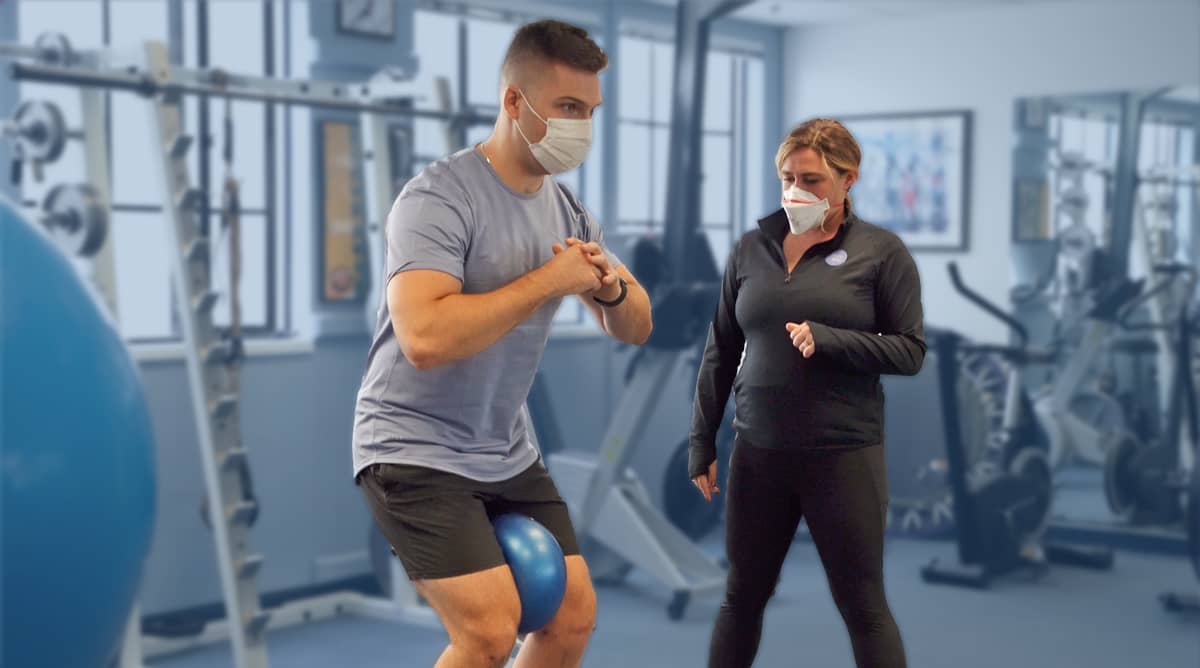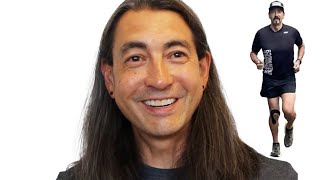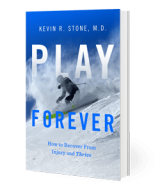Post-Surgery Recovery
Hear From Our Patients
Running & Skiing After Partial Knee Replacement - 3 months post-opYou’ve come through your surgical procedure with flying colors. Now it’s time to get back on your feet again as soon as possible. First on your to-do list: Take care of your tissues.

This article is adapted from Dr. Stone's book Play Forever.
Damage to tissue occurs when you stretch tissue past its functional limit or traumatize it in some other way. We understand quite well how the body reacts to injury. When tissue tears or ruptures, bleeding occurs. A sequence of events then follows tissue swelling, reabsorption of dead tissues, and remodeling with new collagen. The injury stimulates the body to recruit cells and blood vessels into the area so that eventually, healthy tissues replace the injured ones.
In some ways, the moments immediately after surgery are no different from the seconds after the injury itself. You have been hit with an axe, otherwise known as a scalpel. No matter how delicately it was applied, the tissues were first surgically separated and held apart while the underlying injury was repaired. The body rushed a new blood supply to the incision. Pain fibers sent millions of signals to the brain (though the magic of anesthesia somehow blocked the memory of it), tissues swelled, muscles contracted, and all your injury protective mechanisms went into overdrive. The trick is to direct all of those responses into a healing, rather than a recoiling, response.
To do this effectively, you need to manage the pain. Suffering from pain after surgery is one of the most feared experiences in medical care. Yet this fear is unnecessary because pain is largely preventable. No surgical outcome is improved by the patient having pain. Both you and your surgeon want to minimize discomfort so you can focus on your recovery exercises. Here’s what you can do.
- Talk to your doctors. Before surgery, be sure to discuss the pain-relief strategies you and your doctor plan to deploy. Ask your doctor if you can take oral non-narcotic pain medication such as Celebrex the night before and the morning of surgery. Ask your surgeon to deploy the newest long-acting local pain medications at the site of surgery before any incision is made. New versions of the traditional numbing medications (e.g., lidocaine) are bound to slow-releasing fat molecules or mixed with an NSAID gel and provide three days of anesthetic relief. They are so effective that all of our partial and total joint replacement operations are now performed at our outpatient center as the patients go home the same day. In addition, we add regional blocks to augment the local anesthetic and provide additional long-acting pain relief.
- Get the right mix. You want to find the combination of non-narcotic plus, if necessary, narcotic medications that relieve post-op pain yet minimize the nausea normally associated with them. We use T&T first—Tylenol and Toradol—because they are great pain relievers without the narcotic downsides. When combined with ice, elevation, and soft-tissue massage, narcotics can often be avoided. As for icing, sequential-compression ice machines—such as Game Ready—relieve pain by decreasing swelling with local cooling.
- Use enough medication. Many patients are scared of using too much medication. As a result, they underdose and suffer needlessly. It is unlikely you will become an addict after a couple of days of needed medications! However, it is likely you will be miserable if your pain is not controlled.
- Prepare mentally. Remember the Buddhist maxim that pain is inevitable, but suffering is optional. You can have pain, but not suffer from it. This mental preparation dramatically improves your ability to work with the symptoms and discomfort from any surgical procedure, yet not suffer from the underlying pain.
- Use alternative pain-management methods if they work for you. These can include acupuncture, electrical stimulation, and meditation. The wide variation in people’s responses to these modalities is always surprising. When they work, they work without side effects.
- Use alternative medications if they work for you. The role of THC (tetrahydrocannabinol), CBD (cannabidiol), and other medical compounds extracted from cannabis is being evaluated in several studies and used widely by our patients though we cannot prescribe them. There is an important role for drugs that cause disengagement, mellowness, and euphoria during the initial postoperative time. Unfortunately, dosages and other FDA-approved recommendations are not yet available.
Fundamentally, the key to our patients’ rapid successful recoveries is tied to their ability to see themselves, and our ability to help them perform, as athletes in training and not patients in rehab. The immediate goal setting and exercise performance around the injury and surgery site sets the tone for an early return to an active life. If you are going to Play Forever, it helps to start now no matter what the challenges.
A Patient's Perspective on StoneFit Rehab Approach


